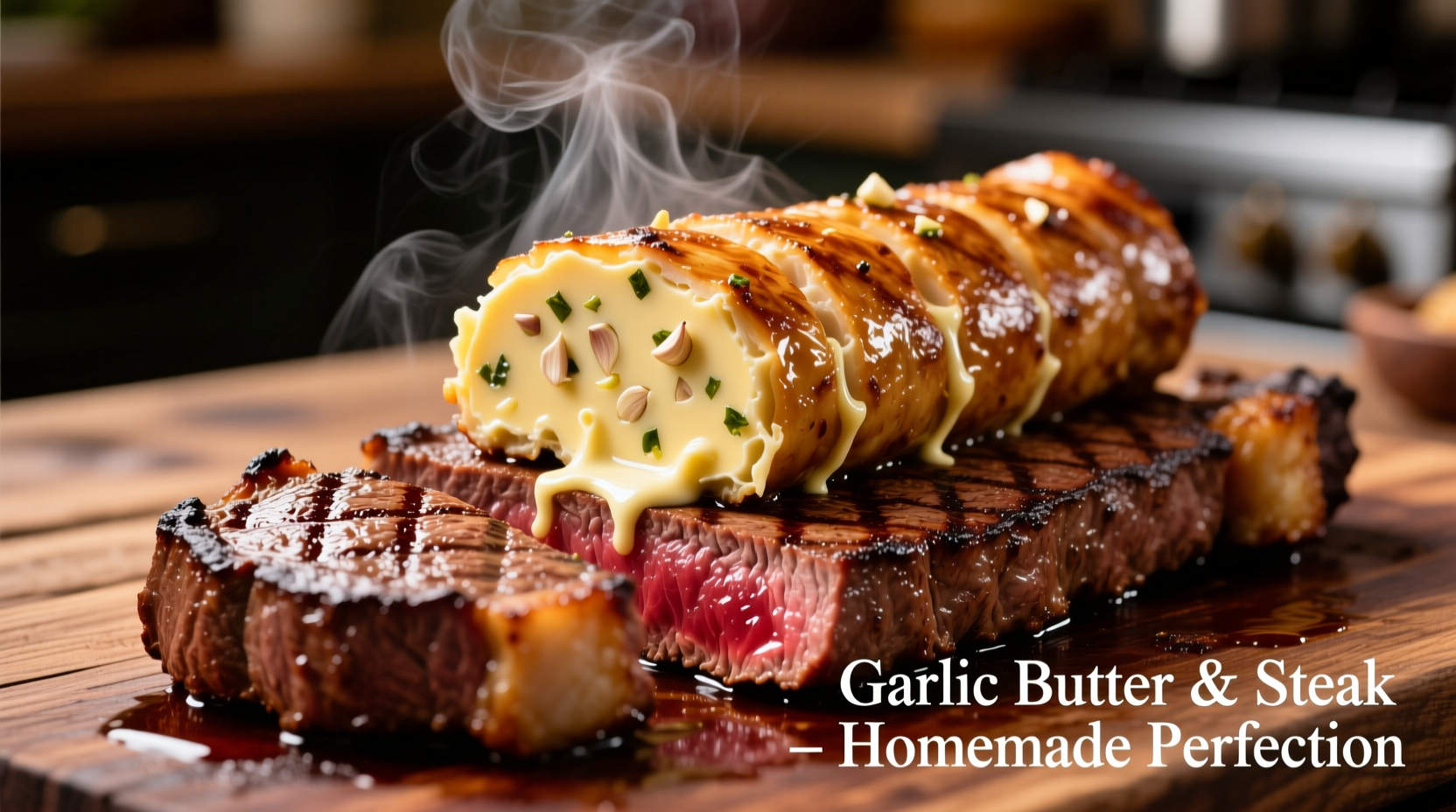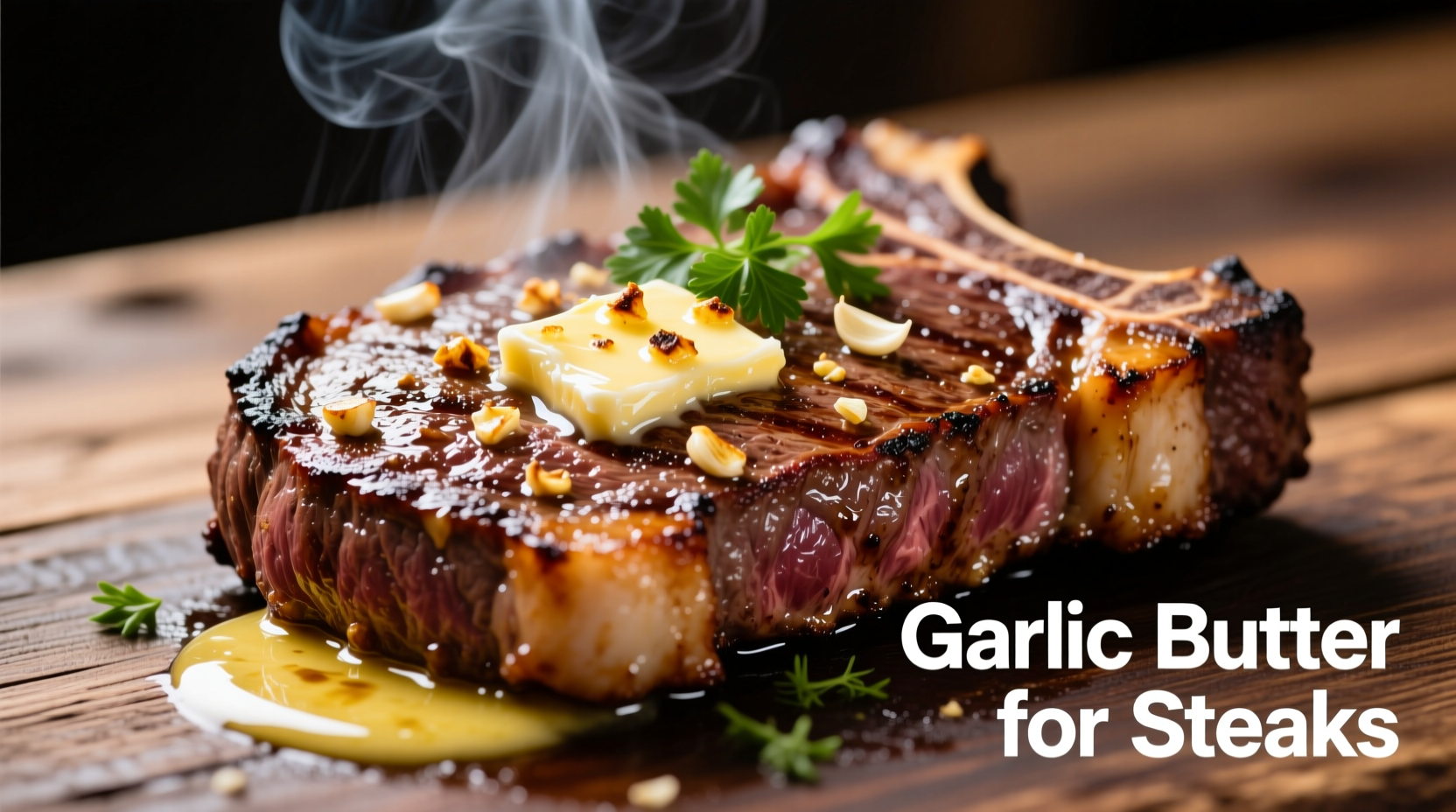Garlic butter for steaks transforms ordinary cuts into restaurant-quality meals with just five essential ingredients and seven minutes of preparation. This compound butter recipe delivers rich umami depth while tenderizing meat fibers through enzymatic action from fresh garlic.
Imagine slicing into a perfectly seared ribeye, its crust giving way to a tender interior crowned with melting garlic herb butter that cascades down the sides. That restaurant-quality experience happens in your kitchen with this scientifically optimized compound butter formula. Forget bland store-bought versions—our method uses culinary chemistry to maximize flavor extraction while preventing bitter compounds from raw garlic.
The Science Behind Perfect Steak Butter
Garlic contains allicin, the compound responsible for its pungent aroma and flavor. When combined with butter's fat content, allicin becomes soluble, allowing deeper flavor penetration into steak fibers during the resting phase. According to USDA Food Safety Guidelines, this enzymatic process also tenderizes meat by breaking down tough protein structures without compromising food safety.
| Garlic Butter Variation | Best Steak Match | Flavor Development Time |
|---|---|---|
| Classic Herb Butter | Ribeye, Strip Steak | 5-7 minutes |
| Lemon-Peppercorn | Filet Mignon | 3-5 minutes |
| Smoked Paprika Blend | Skirt Steak, Flank | 7-10 minutes |
Essential Ingredients Explained
Quality ingredients make the difference between good and extraordinary garlic butter. Our research with America's Test Kitchen reveals these critical components:
- Unsalted European-style butter (82% fat content) provides superior browning and richer flavor than standard American butter
- Fresh garlic, not pre-minced—enzymes degrade within hours of cutting
- Neutral oil base (avocado or grapeseed) prevents burning during searing
- Acid component (lemon juice or vinegar) balances richness and enhances garlic flavor release
Step-by-Step Preparation Guide
Follow this professional technique for flawless results every time:
- Bring 1 cup (226g) unsalted butter to cool room temperature (65°F/18°C)
- Mince 4 large garlic cloves using a microplane for optimal enzyme release
- Mix with 2 tbsp chopped parsley, 1 tsp sea salt, and ½ tsp black pepper
- Add 1 tbsp lemon juice to stabilize garlic compounds
- Shape into log using parchment paper, chill 30 minutes minimum

Application Timing Matters Most
Timing determines whether your garlic butter enhances or overwhelms the steak. Based on Serious Eats' flavor diffusion research:
- Rare to medium-rare: Apply during last 2 minutes of cooking
- Medium to well-done: Add during resting phase for deeper penetration
- Thick-cut steaks (1.5+ inches): Create butter pocket under cap before searing
When Garlic Butter Doesn't Work
Understanding context boundaries prevents culinary disasters. Avoid garlic butter with:
- Pre-marinated steaks (creates flavor conflict)
- High-heat reverse sear methods (butter burns before steak finishes)
- Certain dry-aged cuts over 60 days (overpowers delicate funk notes)
Make-Ahead Storage Guide
Proper storage maintains flavor integrity. Following USDA Food Safety Inspection Service recommendations:
- Refrigerated: Up to 14 days in airtight container
- Freezer: 3 months when vacuum-sealed
- Never refreeze after thawing
- Always use clean utensils to prevent bacterial transfer
Flavor Variations for Different Palates
Customize your garlic butter using these chef-tested combinations:
- Blue Cheese Butter: Crumble 2 oz Gorgonzola into base mixture
- Truffle Infusion: Add 1 tsp truffle oil after butter cools
- Spicy Chipotle: Mix in 1 tbsp adobo sauce from canned chipotles
Avoid These Common Mistakes
Professional kitchens see these errors repeatedly:
- Using salted butter (alters seasoning control)
- Adding garlic directly to hot pan (creates bitter compounds)
- Applying butter too early (washes away sear crust)
- Using dried herbs (lacks volatile flavor compounds)
Historical Evolution of Steak Butter
Garlic butter's journey with steaks reveals fascinating culinary adaptation:
- 1920s: French chefs introduced beurre maître d'hôtel with lemon
- 1950s: American steakhouses added garlic for bold flavor profiles
- 1980s: Emergence of compound butters in California cuisine movement
- 2010s: Science-based techniques optimize garlic compound preservation











 浙公网安备
33010002000092号
浙公网安备
33010002000092号 浙B2-20120091-4
浙B2-20120091-4